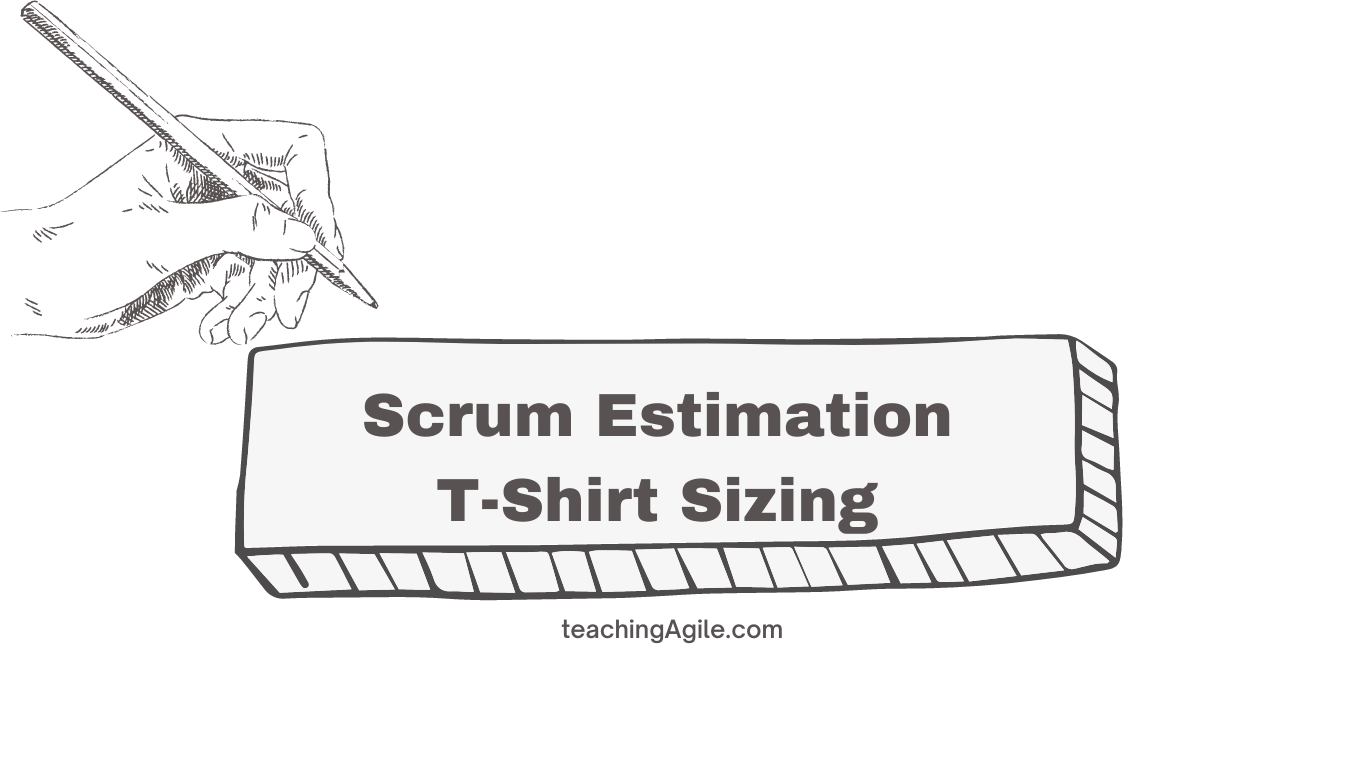
Scrum Planning and Estimation: T-Shirt Sizing
Welcome to this lesson on T-Shirt Sizing, an intuitive and simple estimation technique used in Scrum Planning and Estimation. T-Shirt Sizing involves assigning sizes such as 'Small,' 'Medium,' 'Large,' and 'Extra Large' to Product Backlog Items (PBIs) to represent their relative effort. In this lesson, we will discuss the purpose, benefits, and steps involved in T-Shirt Sizing.
 Scrum Planning and
Estimation: T-Shirt Sizing
Scrum Planning and
Estimation: T-Shirt Sizing
Purpose of T-Shirt Sizing
T-Shirt Sizing serves several key purposes within the Scrum framework:
-
Simplicity: T-Shirt Sizing offers a straightforward and easy-to-understand method for estimating effort, making it accessible to all team members.
-
Relative Comparison: T-Shirt Sizing focuses on comparing the relative effort of PBIs, rather than estimating the exact effort required, which can be more accurate and less time-consuming.
-
Quick Estimation: T-Shirt Sizing allows the Development Team to quickly estimate the effort required for PBIs, enabling them to spend more time on actual development work.
-
Communication: T-Shirt Sizing facilitates communication among the Development Team, as the sizes provide a shared vocabulary for discussing the effort required for each PBI.
Benefits of T-Shirt Sizing
T-Shirt Sizing offers several benefits compared to traditional estimation techniques:
-
Easy to Understand: T-Shirt Sizing is intuitive and easy for everyone on the Scrum Team to understand, reducing the learning curve associated with more complex estimation techniques.
-
Reduced Pressure: T-Shirt Sizing reduces the pressure to provide exact effort estimates, allowing the Development Team to focus on the relative effort required for each PBI.
-
Flexibility: T-Shirt Sizing can be easily adapted to different teams, projects, or domains, providing a flexible and versatile estimation approach.
-
Collaboration: T-Shirt Sizing encourages collaboration among the Development Team, as team members work together to determine the appropriate size for each PBI.
Steps in T-Shirt Sizing
T-Shirt Sizing typically involves the following steps:
-
Select a PBI: The Scrum Team selects a PBI from the Product Backlog to estimate.
-
Discuss the PBI: The Product Owner briefly explains the PBI, its requirements, and acceptance criteria, allowing the Development Team to ask questions and clarify any uncertainties.
-
Assign T-Shirt Sizes: The Development Team members discuss the relative effort required to complete the PBI and assign a T-Shirt Size ('Small,' 'Medium,' 'Large,' or 'Extra Large') that best represents the effort.
-
Consensus: The Development Team reaches a consensus on the T-Shirt Size for the PBI. If necessary, the team can discuss any differing opinions and revise the size accordingly.
-
Continue with Remaining PBIs: Repeat steps 1-4 for the remaining PBIs in the Product Backlog.
-
Optional: Convert to Numeric Values: If desired, the Scrum Team can convert the T-Shirt Sizes to numeric values, such as Story Points or Ideal Hours, for more detailed planning and tracking purposes.
In conclusion, T-Shirt Sizing is an effective and straightforward estimation technique in Scrum Planning and Estimation that allows Development Teams to quickly and easily estimate the relative effort required for PBIs. By using T-Shirt Sizing, Scrum Teams can improve their communication, collaboration, and estimation accuracy, leading to more effective planning and forecasting. Give T-Shirt Sizing a try, and enjoy the simplicity and benefits of this estimation technique!